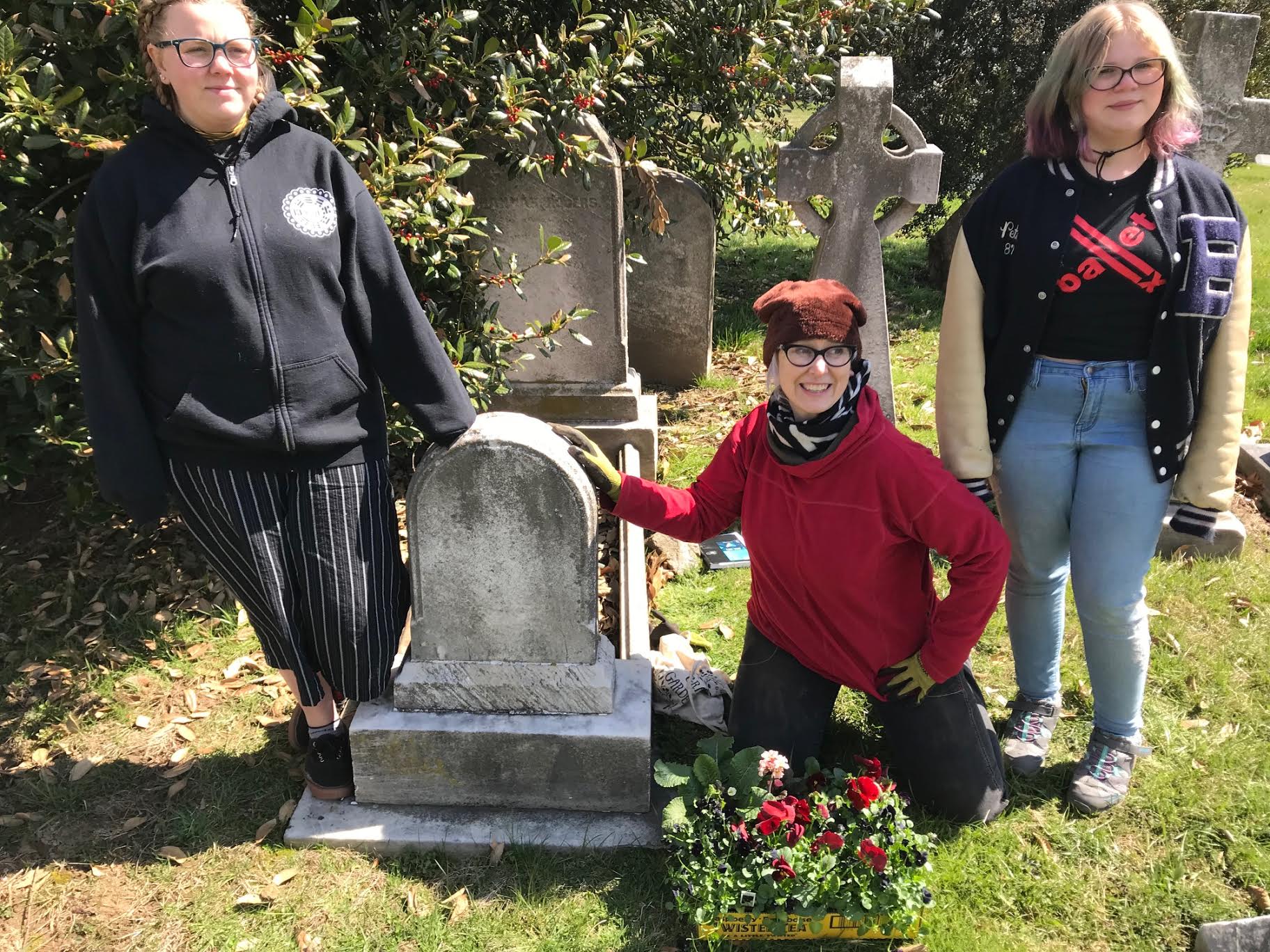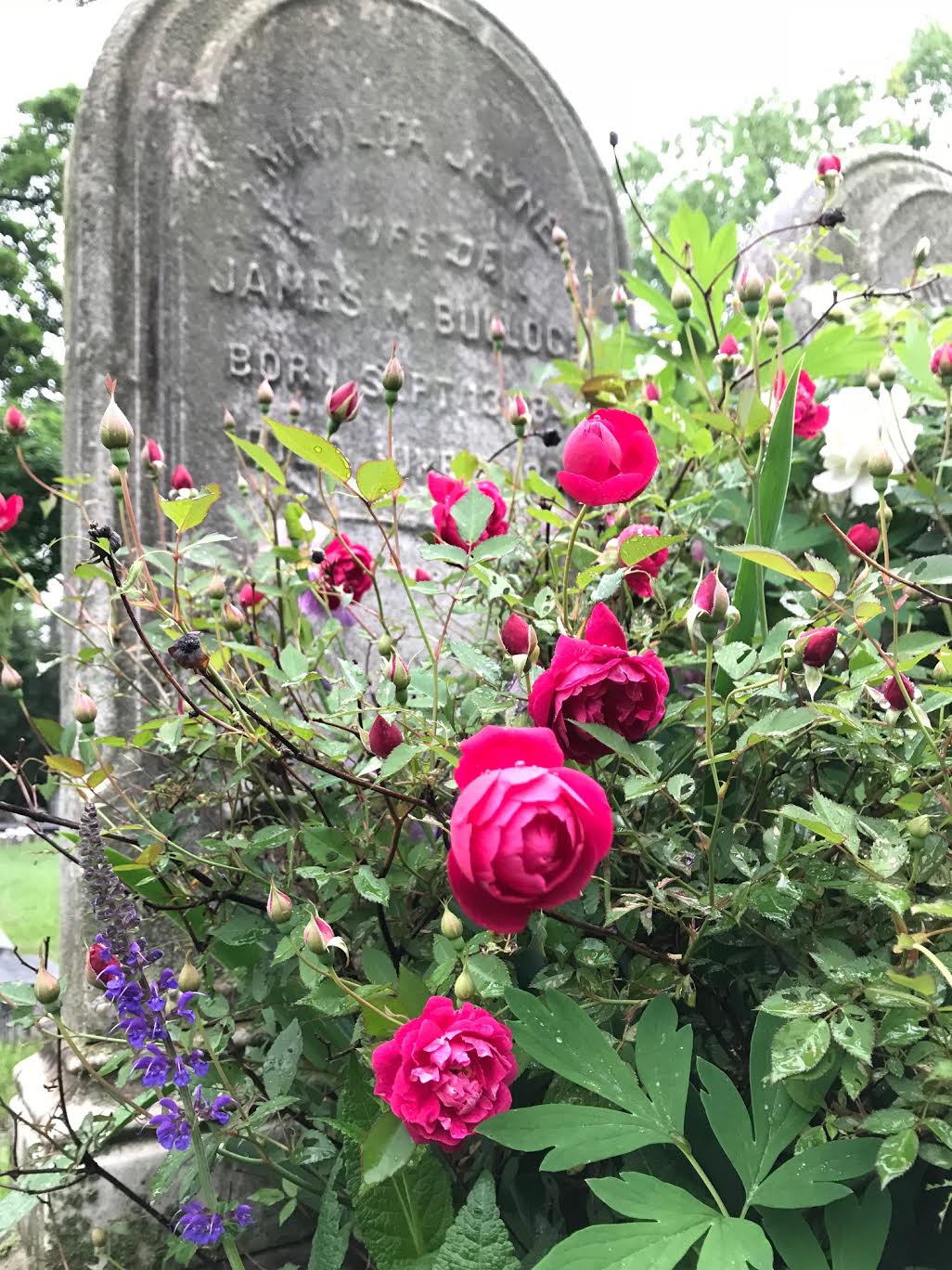
Before the Woodlands in Philadelphia was a cemetery, it was a garden. On this stretch of land on the west bank of the Schuylkill River in the late 18th century, botanist and plant collector William Hamilton cultivated specimens from around the world, including some of the first Gingkos planted in North America, and seeds collected by Lewis and Clark on their expedition. When the land was transformed into a burial ground in 1840 as part of the rural cemetery movement, which emphasized romantic landscapes in contrast to the crowded churchyards of colonial America, it maintained that gardening spirit. Instead of one man’s vision, however, these plantings were carried out by families, often in the fashionable Victorian cradle graves.

Over time those cradle graves — named for their shape that forms a planter between a marble or granite headstone, footstone, and two walls — were overgrown with grass and weeds as the families died out, moved away, or stopped visiting. When Jessica Baumert became executive director of the Woodlands in 2011, she came across an old Philadelphia guidebook that highlighted the “French-style” cradle graves, describing them as overflowing with flowers. “Knowing that guidebook existed kind of lived in the back of my head since I started working here, and I had the idea that someday it would be great if we planted these again,” Baumert said. “The site has a long horticultural legacy, but we had such a small staff at the time, and no facilities or landscape manager. So, figuring out how to pull something like that off would require a heavy volunteer base.”
The Woodlands launched its Grave Gardeners program in 2016 with the hopes of signing up 20 people for its inaugural year. Over 70 people applied, and their reasons for doing so were not just to get some extra gardening space. Some were West Philadelphia locals who wanted to be involved in a community effort; others had recently lost loved ones whose graves were too far for regular visits and wanted to garden in their honor. “It was this whole mix of responses, but all of them really thoughtful,” Baumert said. “And so, we decided, even though we didn’t really have any funding, that we would accept all of them.”

The Grave Gardeners program is now in its fourth year, with about 150 participants. Baumert described the cradle graves this spring as the lushest she’s ever seen, bursting with blooms, all from plants that would have been available in the late 19th century. Some flourish with purple irises and the sculptural flowers of foxglove; others have beds of richly red poppies and snapdragons. All of the necessary materials are provided to the Grave Gardeners. Partnerships with the nearby University of Pennsylvania, which shares greenhouse space for seeds and plugs, as well as Laurel Valley Soils and North Creek Nursery support a now thriving landscape on the site’s 54 acres.
Each participant attends four workshops before putting their hands in the cemetery dirt, some covering the basics of gardening. The first workshop, however, is on the rural cemetery movement, the botanical history of the Woodlands, and Victorian gardening aesthetics. “One of the things that we thought was important was to make it feel really special, because it is really special to be gardening in this site that has this horticultural legacy,” Baumert explained. “And a lot of people aren’t aware of that legacy.”

Indeed, the Woodlands celebrates its roots as an urban respite, particularly as green space is scarcer in its neighborhood than it was back in Hamilton’s day. When the Woodlands presented a Grave Gardeners display at the recent Philadelphia Flower Show, they featured a picnic scene alongside the foam tombstones. The cemetery also hosts contemporary art exhibitions in Hamilton’s old mansion-house, offers a running trail around its perimeter, and allows dog walking. Just as the Woodlands was a rustic oasis for 19th-century Philadelphia, it encourages respectful recreation for its 21st-century neighbors.
“[The Grave Gardeners program] has been a great community builder, it’s become about more than just gardening for us,” Baumert said. “A lot of our donor base is now grave gardeners; there are people that bring their friends and family here to spread the word about the program. It’s just been above and beyond what we expected when we first threw it out into the world as a thing.”

Many cemeteries, especially those established with sprawling gardens in the 19th century, now rely on volunteers to help maintain these landscapes. Oakland Cemetery in Atlanta has volunteer workdays that include cultivating its cradle graves, and Mount Auburn in Cambridge, the first American burial ground in the rural cemetery movement, has active volunteer involvement in tending its gardens. Others like Green-Wood Cemetery in Brooklyn are introducing workshops in which volunteers can learn about street tree planting while helping to line the cemetery’s perimeter with new arbors.
Applications for the next year of the Grave Gardeners program are opening in January. Its success in attracting and retaining volunteers, some of whom have been caring for the same plots for all four years, includes an engagement with history. Participants are supported in archival and genealogical research on the person’s grave they’re cultivating, with that reminder that this is a memorial for the dead as well as a green escape in the city making these actions more meaningful.
“If people are willing to think about cemeteries as more than just places to bury people, our position in the city makes us so accessible to so many,” Baumert stated. “And I want people to realize we can do these things here. People feel very obligated to the person whose grave they’re gardening, so they will come have a family picnic, and one of our gardeners last year had a birthday party for her guy that she invited all the grave gardeners to. It’s almost like bringing back the 19th century, but with people you didn’t know.”
